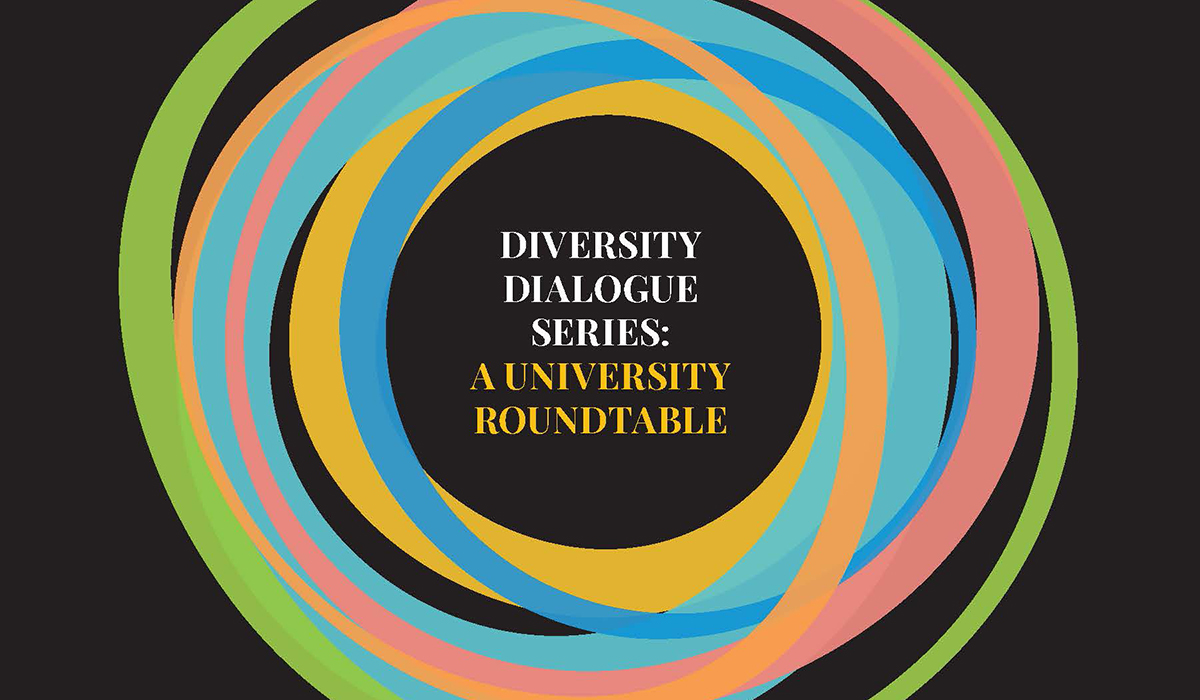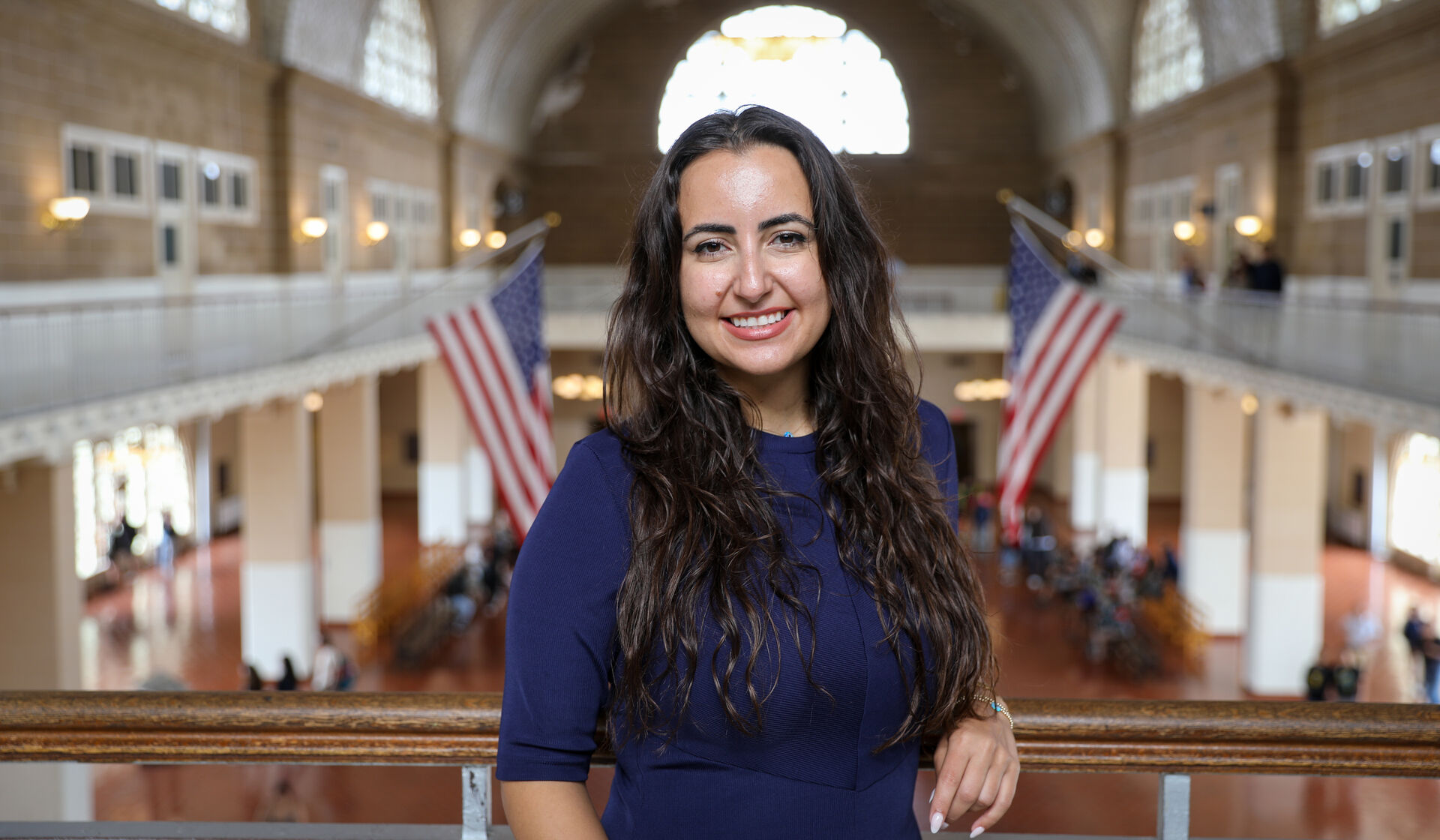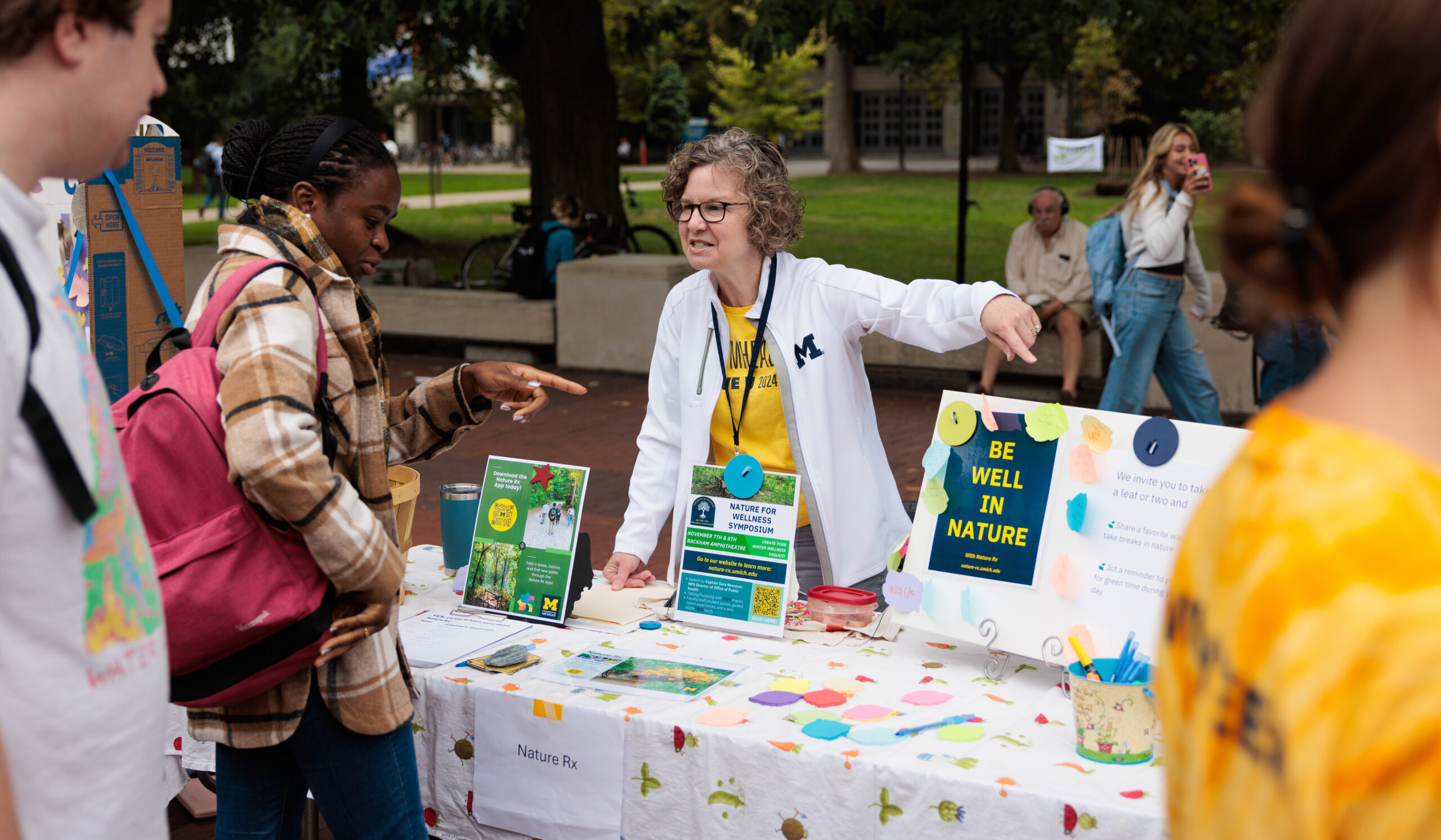In 2016, the University launched a campuswide effort to address issues of diversity, equity, and inclusion (DEI) through a five-year strategic plan. As the University enters year five of the plan, larger forces have reframed DEI discussions — from the killing of George Floyd and the protests that followed to the disproportionate impact of the pandemic on minority communities. Michigan Alumnus gathered key members of the University community to discuss the impact of the central DEI strategy (and those of the 50 plans within individual schools, colleges, and units) as well as larger issues of diversity at U-M. While much has been gained, much still needs to be done. The following has been edited for length and clarity.

THE EVOLUTION OF DEI EFFORTS ON CAMPUS SINCE 2016
ROBERT SELLERS, PHD’90
U-M VICE PROVOST FOR EQUITY AND INCLUSION, CHIEF DIVERSITY OFFICER, AND PROFESSOR OF PSYCHOLOGY AND EDUCATION
We recognized at the beginning that it took the University 200 years to get here and it wasn’t going to change overnight — that it was going to take sustained, long-term effort and focus to make the kind of changes to create the kind of university that we all wanted to see. And so, in the planning process, we wanted to make sure that our DEI five-year plan would provide us with a mechanism to do that long-term change.
At the end of year five, we will not be the university that we want to be. We will have made progress, but we still have a long way to go. And I’m happy to report that there will be a DEI 2.0. But we’re constantly working to bring in support to the University. Similarly, we will constantly be working to change the University such that we live up to those values of diversity, equity, and inclusion.
KATRINA WADE-GOLDEN, ’94
U-M DEPUTY CHIEF DIVERSITY OFFICER
We are simultaneously activating the centralized planning and implementation effort, and the 50 localized plans, with the understanding that the real change, the foundational change that we need to shift culture, is going to take place within the units.
The next element in terms of goals is this focus on assessment and accountability, accountability at a number of levels — making sure that we’re reporting to the regents, to the president, to the broader community, and within the units regarding our progress on the stated actions and priority areas that we’ve identified in the central and the unit-based plans.
PERSPECTIVE OF STUDENTS, PAST AND PRESENT
JUMANAH SAADEH, MA’19
CURRENT MBA STUDENT
First and foremost, I want to say that the DEI work that has been done on campus is truly incredible, especially in the harnessing of the collaborative effort across the institution. Getting people to work together and building a united way of moving forward with an ultimate goal is really, truly amazing.
With that being said, I still think it’s pretty narrow in scope. We’re having very basic conversations. That’s understandable; we want people to be on the same page so that we can have more complex conversations. But I work with students, and a lot of what I’m hearing from students is, “We know this; we know the basics. We want more.”
CHANEL BARNES
LSA SOPHOMORE
Coming to U-M and being Black, I already was thinking about U-M being a predominantly white institution. So I already knew what I was walking into on campus. I felt lost in terms of my identity, and I know I’m not the only one that can attest to this, being a Black woman at the University of Michigan. I don’t like using the term “marginalized” because that’s not our value, because we are worth more. Though you can really feel small when you’re not represented.
GWENDOLYN HATTEN BUTLER, ’77
PARTNER IN CAPRI INVESTMENT GROUP, AND MEMBER OF THE ALUMNI ASSOCIATION BOARD OF DIRECTORS
I wonder where the white allies are in this discussion. For the second Black Action Movement strike that I experienced (in 1975), we had white allies. When we talk about diversity and inclusion, it’s always on the Black and Brown folks to solve the problem. And so I’m wondering, as the University looks at DEI 2.0, what is being done to really create a community of allies.
IGNACIO SALAZAR, MSW’72
PRESIDENT AND CEO OF SER-JOBS FOR PROGRESS NATIONAL, AND MEMBER OF THE ALUMNI ASSOCIATION BOARD OF DIRECTORS
I agree totally, Gwen. You’ve got to get everybody at the table. What I found refreshing was that there was a lot of good communication, back then, between the Black and Brown communities. You learned a lot about each other, and you realized that the differences are minimal compared to what you have in common.
CHANEL BARNES
I went to a rally for Black Lives Matter, and there was a white guy holding up a sign that said, “I am a recovering racist, learning how to be anti-racist.” The fact that this white guy had the courage to bring this to the rally, it brought hope to me. And that’s what I say about allyship. I think if a white person talks to another white person who is a recovering racist, that white person could learn more than from a Black person, just to be very honest. It seems as if every time a Black person talks, all they see is color and not what they are saying.
JUMANAH SAADEH
The conversations we’re having about race are essential. Race plays an indisputable role in both policy and everyday reality in the U.S. and in the world. Something that we hear from our international students is that they don’t feel like they have a space in DEI conversations because they’re very U.S.-focused. To expand the conversation on diversity, we should include their voices. We do have a significant international student population, and they contribute tremendously to the University and to the U.S. at large. Likewise, many students and alumni live abroad at some point; part of being the Leaders and Best is empowering students to be engaged, responsible, culturally competent global citizens.
ACCOUNTABILITY AND SOLUTIONS
GWENDOLYN HATTEN BUTLER
When you think about diversity, equity, and inclusion programs, I always wonder about accountability. If there is no progress or progress is not being made against goals, what are the implications or consequences?
ROBERT SELLERS
The number of students graduating from the place that had increased our number of African American students — Detroit — has dropped by almost three times from the 1980s; the size of Detroit has dropped. The funding in Detroit schools has dropped at the same time in which we have become even more selective and at a time in which we are not allowed to use some of the same kinds of tools of many other institutions. (For example, the state of Michigan’s Proposal 2 in 2006 banned, among other things, preferential treatment based on race or ethnicity in college admissions.)
Now that doesn’t mean that we can’t be working to do better. One program that we’ve implemented to provide opportunities for students is the Wolverine Pathways program (a college readiness program for students in Detroit and Southfield and Ypsilanti, Michigan). It is an example of such an effort from the University to try to address the problem.
At the same point in time, there has been progress with our Latinx community and our Asian American community. That’s not pitting one against the other. That’s just saying that we’ve got to figure out strategies that will work specifically with our African American students.
With regard to issues of accountability, one of the initiatives has been to make diversity, equity, and inclusion a part of the annual review process for faculty and staff as well as for administrators, for deans, for executive officers. We’ve also worked to include DEI practices and issues of bias in the hiring processes for faculty as well as staff and attempted to incorporate that in the admissions processes as well.
We have diversity and social transformation professorships, which are targeted at faculty. We have a number of distinguished diversity awards that are targeted at staff. So one of the things that we’re trying to do is to change and to make DEI accountable.
KATRINA WADE-GOLDEN
One thing that I would add to this conversation is that it has been an incredible challenge to make sure that folks are aware of the progress that is being made. And this is why it’s so important for students like Chanel and Jumanah to really help us in terms of being ambassadors and making sure that students know about the plans that are situated within their schools.
A big difference between the work that we did in the ’70s, ’80s, and ’90s and the work that we’re doing now is that we’re engaging a broader set of challenges. We now have specific actions targeted at faculty, targeted at students, targeted at staff. It’s also really important to understand that the work is not just happening centrally, but it’s happening in all the units. As of now, they have 37 faculty who’ve been hired as a result of the LSA Collegiate Fellows Program — who were identified as individuals having that dedicated commitment to diversity, equity, and inclusion. And they’ve committed to 50 of these positions across the five years of the plan.
GWENDOLYN HATTEN BUTLER
I’m a proud product of the Detroit public schools system, and I’m a member of the board of directors of the Detroit Public Schools Foundation. So I understand exactly what’s happening in Detroit. But I still think that if we have issues with the pipeline, then we should be able to figure out how to grow the pipeline.
There’s a coalition between the University of Michigan School of Education and others that is putting in place a kind of teaching college at Marygrove in Detroit. (The P-20 Partnership includes an early childhood education center, a K-12 school, and a teacher education program modeled after hospital residency programs.)
It’s those types of things that don’t yield immediate results but could certainly be accelerated and expanded to address the problems of the pipeline, particularly of African American students who have the educational background to be able to compete successfully at the University. So I think that there are things that, as we think about using the power of the University to address social justice, the University of Michigan could be a leader.
ROBERT SELLERS
That partnership comes out of the DEI.
IGNACIO SALAZAR
One of the things I need to mention, too, is the LEAD Scholars Program (the Alumni Association’s program that provides scholarships to Black, Latino, and Native American students who have been accepted into U-M). The graduation rate is outstanding. We put a lot of financial resources into it as well, recognizing that there are students that are not in Michigan, that need to come here for us to have a more diverse student population. And they require more financial support to get here than what they might receive otherwise. We’ve got 40 students and about 300 alumni.
WHAT THE COMMUNITY CAN DO
JUMANAH SAADEH
One thing that we need to focus on is developing a shared vision around which to build a community. We can structure this conversation as, “We are a collection of unique individuals with different backgrounds, we are acknowledging our differences, and we are working together for a better future for everyone.” The power of a shared mission to unite different individuals into a community cannot be understated, and having a constant focus on our vision and hopes for the future is what will weave us together into a community.
IGNACIO SALAZAR
We’ve got to better reflect society, and not just today, but in the future. The future is going to be more minority. So we need, throughout the University, to develop a community for the students, where they have resources available. They in turn can be change agents and help to create the university that we want. You know, talent is equally distributed, but opportunity is not. And so we need to make sure that we’re reaching out as best as we can to bring a diverse student population, a diverse faculty and staff to the University and make it the best that it can be.
GWENDOLYN HATTEN BUTLER
I really think that we have a moment where we can make positive change. So I would ask each of us individually to look at how we are living our own individual lives and whether our day-to-day actions — with our work colleagues, in our communities — reflect real social justice. Or are we doing things that unconsciously continue to perpetrate systemic racism. We have these institutions, but they are all propped up by individual actions. So if all of us, no matter what our color, don’t examine what we do as individuals on a day-to-day basis to continue to perpetrate these systems that don’t allow everyone in America to have an equal opportunity to participate, then it’s very difficult for an institution to put in place a program that that will have any type of lasting impact.
KATRINA WADE-GOLDEN
This work takes all of us chipping in to support the heavy lift of the change that we hope to see at the University of Michigan. We can’t be on the periphery or on the outside saying “Well, what is the University of Michigan doing?” because each and every one of us is the University of Michigan. So what can you do as an alum, what can you do as a faculty member, what can you do as a staff member, what can you do as a student to help be the change that we want to see at the University of Michigan? I’m incredibly encouraged in some of the discussions around the evolving anti-racist work that’s going to be taking place this coming year and beyond within some of the units. People are working very hard within the 50 planning units to think about what specifically they can do within the units to support the University centrally in terms of moving the needle on that work as we go into year five and beyond.
ROBERT SELLERS
The good thing is the challenge is so large that it doesn’t matter where you start. Start someplace that you have a passion for, whether it’s supporting scholarships at the University of Michigan; whether it’s mentoring, providing internship opportunities, and other opportunities; whether it’s pushing the administration, the president, the regents, me, to do better to be better. But as you do that push, be very clear what you’re also willing to do to move us forward.
CHANEL BARNES
I just want you to know that there is conversation happening. And there is change. I have a poster on my wall that says “Little progress is still progress.” I’m not saying that to negate the racism that is in America, but I’m saying that little progress is still progress.





